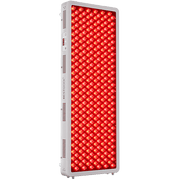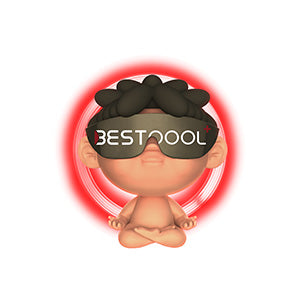Overview of Red Light Therapy's Potential in Climbing Injury Management
Mountaineering has become one of the most preferred outdoor activities for nature lovers with a spirit of self-challenge. The high altitudes, very steep mountain trails, fast climatic changes, and lack of means for medical treatment within the wilderness increase the likelihood of injuries occurring during mountaineering activities. This would mean every climber must have a way of dealing with bruises and alleviating pains in such a manner that permits the activity to go on without fear of further injury. That is where RLT comes in; it would help speed up recovery and even prevent injury, thus making it a solid choice for climbing.
Growing Need for Good Injury Prevention and Recovery
Climbing is increasing in popularity. With that comes a strong emphasis on methods of injury prevention and recovery. Getting sore is something everyone experiences sometimes. Climbers would like to recover fast so they can continue. RLT helps athletes recover fast so they can avoid downtime.

Understanding Overuse Injuries in Climbers
Common Types of Overuse Injuries
- Strain on the tendons of the elbow due to repeated gripping and pulling motions.
- Inflammation of the lining within joints, often due to overuse and strain.
- Inflammation of the tendons, commonly caused by repetitive movements or excessive load.
- Pain, swelling, and limited range of motion; these issues may force climbers to take time off and, if untreated, can persist long-term.
Biomechanic and Risk Factors of Climbing Overuse Injuries
- Incorrect form or inefficient movement patterns increase stress on the body, leading to overuse injuries.
- Pushing the body too hard without adequate recovery time, preventing muscles and tissues from adapting properly.
- Insufficient rest between climbing sessions prevents tissue repair and increases the risk of injury.
- Constant repetition of high-stress actions can cause small tears in muscles and tissues, contributing to injury development.
Overuse Injuries Impact on Climbing Performance and Career Longevity
If overuse injuries aren't addressed, they really can hurt performance. They may begin to cause lesser grip strength and more frustration. RLT is a great way to keep injuries at bay and keep climbers in the game.

The Science Behind RLT for Injury Recovery
How does RLT work?
Red light therapy uses low levels of red and near-infrared wavelengths, which penetrate the skin and cause stimulation of the cell from the mitochondrial level, resulting in increased production of ATP for cellular energy and repair. It also enables efficient blood flow delivery through tissues with an increased supply of oxygen and nutrients and lowers oxidative stress and inflammation. Collectively, such effects create a very conducive condition for healing and recovery, hence making it such a strong injury-preventing and rehabilitation tool.
Optimum RLT Treatment Parameters
- Wavelength: 600 to 700 nanometers are used for surface healing, while 800 to 900 nanometers are used for deeper tissue.
- Power Density: Utilize 5-100 mW/cm² depending on the treatment area.
- Treatment duration: 15 to 30 min treatment per session several times a week is most effective for the treatment of injury.
Evidence-Based Support for RLT in Musculoskeletal Injury Management
RLT has been shown to promote tissue repair and reduce inflammation and pain by stimulating cellular energy production and enhancing circulation. Furthermore, because of its non-invasiveness, it can be used as an adjunct therapy that helps speed up recovery and maximizes improvement with athletes and others with musculoskeletal conditions.
Benefits of RLT for Climber's Musculoskeletal Health
Reducing the Inflammation, Pain, and Swelling of Affected Areas
The anti-inflammatory effects of red light therapy (RLT) offer significant benefits for climbers dealing with swollen joints or tender tendons. By reducing inflammation, it helps alleviate pain, improve mobility, and potentially speed up recovery, allowing climbers to get back to training sooner.
Accelerating Tissue Repair and Regeneration for Faster Recovery
RLT stimulates fibroblasts, which play a key role in tissue repair, collagen production, and wound healing. This helps prevent minor injuries from escalating into more serious ones during recovery.
Enhancing Collagen Production for Better Tendons and Ligaments Strengthening
Collagen gives tensile strength and elasticity to the tendons and ligaments. Accordingly, RLT promotes collagen synthesis that ultimately strengthens such tissues against injury and improves the resilience of the musculoskeletal system.
Practical Utility of RLT in Climbing Injury Prevention and Rehabilitation
Recommended Protocols for Incorporating RLT into Climbing Training Regimens
Climbers can add red light therapy in various ways, especially in pre- and post-recovery sessions to boost its effectiveness.
- Adding RLT prior to climbing stimulates circulation and keeps the muscles warm
- Use RLT post-climbing to decrease inflammation and enhance optimum repair processes.
- Continue using RLT even during off-season to maintain a healthy body and strong mind.
Combining RLT with Other Proven Recovery Techniques for Synergistic Effects
RLT has been proven to be extra beneficial when its usage integrates with other recovery techniques, including foam rolling, stretching, and cryotherapy. RLT efficacy increases, to boost flexibility and decreases stiffness if combined with exercises in the active recovery phase.
Real-World Examples: Elite Climbers and Climbing Gyms Utilizing RLT Successfully
Athletes in the limelight like LeBron James and Simone Biles have brought the focus on the use of RLT for recovery. It has now found its way into gym and wellness centers serving elite climbers and dedicated fitness pilgrims.
Success Stories: Rapid Recovery from Chronic Overuse Injuries
Many climbers say that RLT has been successful in treating: one climber has elbow pain and has been using RLT for weeks, and is improving; the others said RLT accelerated their recovery after heavy climbs. Users apply it pre- and post-climbing both inside the gym or in recovery centers to experience RLT perks while mountaineering.
The Future of Red Light Therapy in Climbing Injury Management
Advocating for Further Research on RLT's Applications in Climbing Medicine
To date, it can be stated that RLT has anti-inflammatory effects, promotes tissue repair, and speeds up recovery. However, concrete studies made on this treatment used in climbing injuries such as pulley strains, tendonitis, and chronic stress about joints are relatively less. Future research should define the optimal wavelengths, durations and treatment protocols of photobiomodulation used to treat climbing injuries.
Educating Climbers and Coaches About RLT
Teaching climbers and their coaches about red light therapy helped them use this method well to prevent injuries and recover from them. Knowing the best treatment protocols will enable a climber to take the most advantage of RLT and consequently include it in the routine for training recovery for better and adequate management of injuries.
Conclusion: Climbing Smarter and Stronger with the power of RLT
Climbers can elevate their mountaineering experience by adding red light therapy into daily care. With the power of photobiomodulation, climbers can indeed experience quick recovery, less pain, and a safe expedition. Do not forget to have strength training and sufficient rest in addition to RLT for harder, smarter, and safer long-term climbing.
References
- Glass GE. Photobiomodulation: The Clinical Applications of Low-Level Light Therapy. Aesthet Surg J. 2021 May 18;41(6):723-738. doi: 10.1093/asj/sjab025. Erratum in: Aesthet Surg J. 2022 Apr 12;42(5):566. https://pubmed.ncbi.nlm.nih.gov/33471046/
- Borges LS, Cerqueira MS, dos Santos Rocha JA, Conrado LA, Machado M, Pereira R, Pinto Neto O. Light-emitting diode phototherapy improves muscle recovery after a damaging exercise. Lasers Med Sci. 2014 May;29(3):1139-44. https://pubmed.ncbi.nlm.nih.gov/24258312/
- Foley J, Vasily DB, Bradle J, Rudio C, Calderhead RG. 830 nm light-emitting diode (led) phototherapy significantly reduced return-to-play in injured university athletes: a pilot study. Laser Ther. 2016 Mar 31;25(1):35-42. https://pmc.ncbi.nlm.nih.gov/articles/PMC4846838/














 Small
Small

 Moderate
Moderate

 Moderate
Moderate

 Moderate
Moderate

 Full
Full



